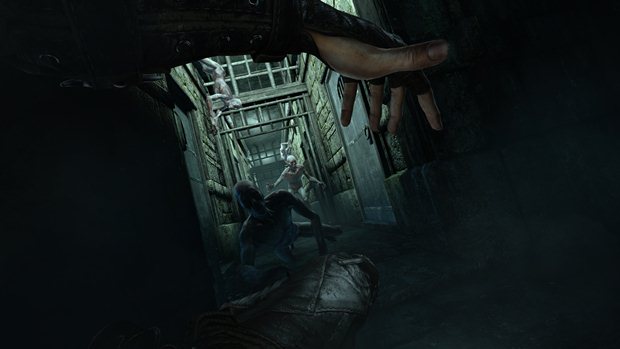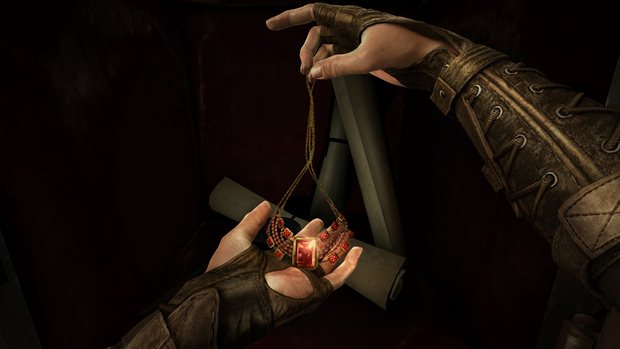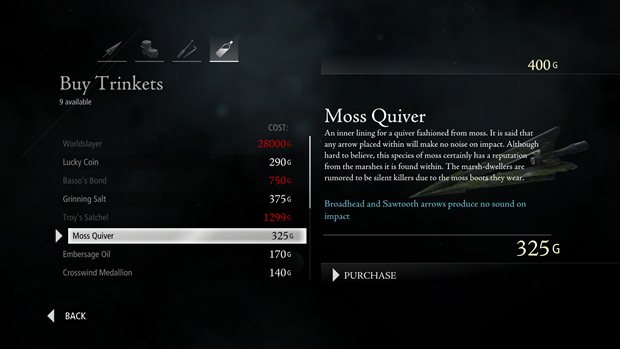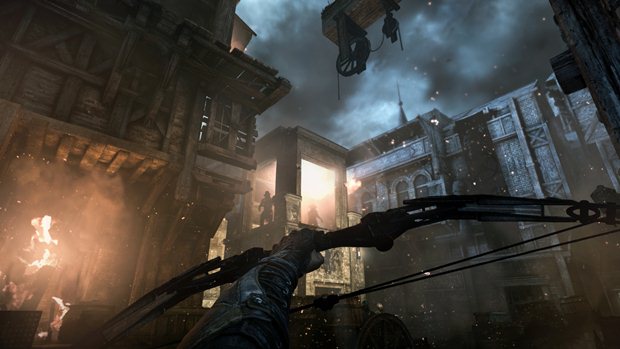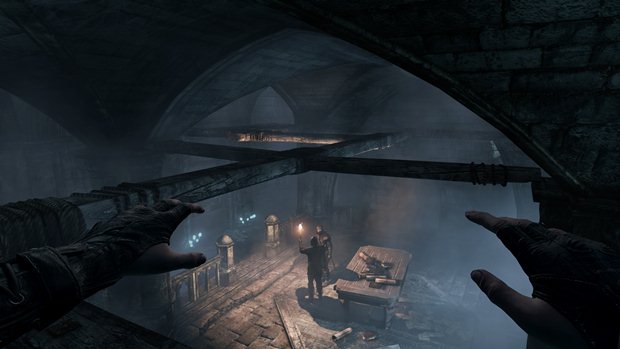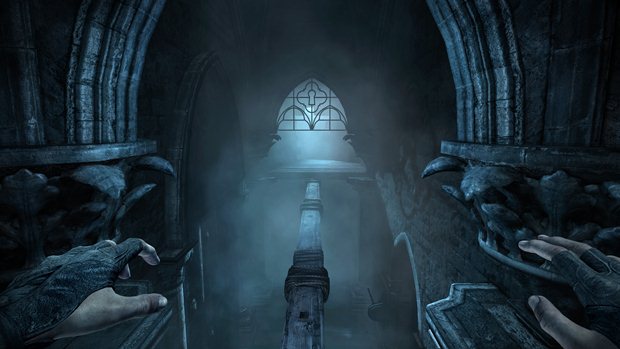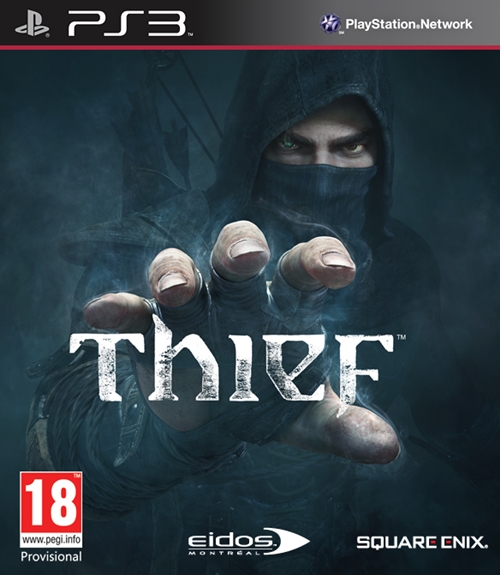
Square Enix really like reboots, especially when it comes to Eidos games. Since acquiring the British publisher in 2009, Square has proceeded to reboot nearly every major franchise in its catalog. The trend started with Deus Ex: Human Revolution in 2011. The game wasn’t a reboot in the traditional sense, but its status as a prequel did allow it to skirt a large majority of the series’ established canon. Hitman: Absolution, released the next year, retained some of the series’ backstory, but was largely focused on the same thing: creating a new version of an old franchise by jettisoning the series’ baggage while retaining its core elements.
Last year’s Tomb Raider went a step further, opting to reset and retool the entire series in an attempt to make Lara Croft relevant again. This year, the title that’s getting the reboot treatment is Thief. Like Tomb Raider, Thief is a hard reboot, opting to drop the series’ longstanding backstory in an effort to create, in the words of developer Eidos Montreal, a “darker, more mature storyline” unshackled by the past efforts in the franchise.
"The story starts off fairly simply: The City (yes, the city in which the game takes place is called The City) is in a golden age. The people are happy and prosperous, and coin is easy and plentiful. In short, it’s a great time to be a thief."
The story starts off fairly simply: The City (yes, the city in which the game takes place is called The City) is in a golden age. The people are happy and prosperous, and coin is easy and plentiful. In short, it’s a great time to be a thief. Garrett, the main character and titular Master Thief, is approached by Basso, his longtime fence, to acquire a certain rare item. It’s the steal of a lifetime, and naturally, Garrett agrees. The only problem is that Basso has also hired Garret’s former protégé, Erin.
The two were once close, but had a falling out after Erin started killing people during their heists. You see, Garrett has a rule: he doesn’t kill people unless it is absolutely necessary. Of course, Basso doesn’t tell Garrett that he’ll be working with Erin, but things go relatively well until the duo finds themselves at the site of a magic ritual. Garrett refuses to continue, saying that the job is too risky and that Erin isn’t ready for it. Erin disagrees, and continues on anyway. Naturally, things go badly, largely because Garrett has stolen her grappling claw, which she has relied on to the point of recklessness.
When the dust settles, Garrett wakes in a city he doesn’t recognize; one covered by “the gloom,” a permanent, shadowy fog that engulfs the entire city and infects its citizens. Before long, he’s trying to uncover what happened during his absence and, more reluctantly, caught up a plot save the city from the gloom.
"The City is a fairly large open world, but most of the story missions take place in self-contained areas that range from underground libraries to abandoned asylums and the odd shipwreck. Each mission is fairly long, but there are only nine of them, which means that you can finish off the main plot pretty quickly."
The City is a fairly large open world, but most of the story missions take place in self-contained areas that range from underground libraries to abandoned asylums and the odd shipwreck. Each mission is fairly long, but there are only nine of them, which means that you can finish off the main plot pretty quickly. The story starts strong, but the plot soon delves into the nonsensical. Ridiculous twists abound, and the characters rarely grow out of their pre-determined archetypes. It all culminates in a fairly disappointing ending that manages to snatch victory from the jaws of defeat at the last second. Still, the story missions offer quite a bit of variety and are usually well-designed.
The main missions can be repeated at any time, but they’re not all Thief has to offer. You can also tackle a number of side missions and explore The City, too. Because of the gloom, The City is permanently shrouded in darkness, and many of the main causeways are shut off from public use and patrolled by the Watch. As a result, Garrett has to sneak through a large majority of the city to get anywhere.
Thankfully, the Master Thief has quite a few tools to make his job easier. The most basic is the grappling claw Garrett stole from Erin, which allows you to climb certain walls. But there’s more to the game than just traversal. You’ve also got the blackjack, which can be used to knock out your foes, should you sneak up behind them. You can use it in combat as well, but Garrett’s not really built for one-on-one encounters. He has a limited amount of health, which doesn’t regenerate, and can only carry a few healing items at a time, so if you can’t get the drop on your enemies, it’s usually better to avoid them entirely.
"Smaller, less valuable items can often be found lying on tables or tucked away in drawers, but the more valuable loot is often shut away in safes, locked up in trunks, or hidden in secret passages."
That’s where the rest of Garrett’s tools come in. Flash bombs allow you to temporarily blind your foes, useful for making a quick escape or getting the drop on an unsuspecting enemy, while a thrown bottle is great for causing a quick distraction. The real star of the show, however, is the bow, and the number of different arrows that come with it. Broadhead, sawtooth, fire, and blast arrows are fantastic for disabling enemies or killing them outright. Rope arrows allow you to reach previously inaccessible areas of the map, while the classic water arrow is great for extinguishing torches, and blunt arrows allow you to distract enemies or trigger far off switches.
As you can imagine, staying in the shadows and remaining undetected is key in Thief, and it will often take all of your tools, and a little luck, if you hope to get by The City’s guards and residents undetected. Once you do, however, you get to go on to the best part of the game: stealing things. Sure, you can pickpocket the odd guard or passerby if you’re stealthy and quick, but the real joy of Thief involves pulling off the perfect heist, and Garrett will steal anything from scissors, private letters, and inkwells to diamonds, necklaces, and paintings.
Smaller, less valuable items can often be found lying on tables or tucked away in drawers, but the more valuable loot is often shut away in safes, locked up in trunks, or hidden in secret passages. Of course, this isn’t a problem for Garrett: the Master Thief comes equipped with lock picks, but can also acquire a screwdriver and a knife for cutting paintings out of their frames, courtesy of some of the local merchants. Still, these are only tools, and pulling off the perfect heist is still left entirely up to you.
"Unfortunately, The City is where Thief starts to fall apart. Because the main pathways are almost all closed, Garrett usually has to find his own way around, while means running across scaffolding, climbing boxes, and entering houses. This would be fine if The City was well laid-out, but it isn’t."
And that is where Thief excels: in guiding Garrett as he searches a bookcase or checks behind a painting for a hidden switch, in picking a difficult lock, in discovering the combination to a safe. This is Thief at its best, and there’s nothing quite like stealing everything you can find in a house before escaping silently back into the night. Of course, locating everything isn’t easy unless you rely on Garrett’s Focus mode, which highlights certain items in the environment.
Like Garrett’s health, however, this doesn’t regenerate, and you can only carry a few items to recharge it. In addition, Focus mode can be used to aid you in combat and to help solve puzzles. Managing your Focus is key to your success, and the best thieves will learn to find everything without it before heading back out into The City proper.
Unfortunately, The City is where Thief starts to fall apart. Because the main pathways are almost all closed, Garrett usually has to find his own way around, which means running across scaffolding, climbing boxes, and entering houses. This would be fine if The City was well laid-out, but it isn’t. Buildings are smashed into one another and placed in an arbitrary fashion, as are many of the boxes, scaffolds, and grappling walls that Garrett can use to get around. What’s worse is that nearly everything looks the same because of the game’s grimdark visual design, and it’s often difficult to tell one dark, random back alley that doesn’t really lead anywhere from another.
"The game is visually stunning, with sharp textures, great character models, and some really incredible animation work. Garrett moves like you’d expect a thief to, gingerly handling each item he retrieves."
The game provides you with both a map and a minimap to try to alleviate this problem, but they don’t do much to help, largely because they don’t provide a clear picture of how you get from one section of the city to another, and you’ll usually have to find an underground path or a window that you can pry open if you want to move between districts. In the case of the former, the paths are pretty easy to find and will generally lead you to a door that will tell you which section of The City you are about to enter. The windows, however, are another matter. Many times, their placement simply doesn’t make sense, and most will lead you from one alley into… another alley.
In the odd case that these windows do lead you into something that seems like it would have a window attached to it, like a house, you’re generally unable to go any further as the doors to that building cannot be opened and no other exits are available. This is extremely frustrating, and as a result, The City feels more like a playground designed for Garrett than a real place. Matters are made worse by the fact that Garrett has to be stealthy at all times to avoid the notice of the City Watch. Oftentimes, getting somewhere is a matter of trial and error, and this makes traveling through The City a chore, especially when all you want to do is buy some arrows from a merchant and get on with your next side quest.
At least The City is beautiful. The game is visually stunning, with sharp textures, great character models, and some really incredible animation work. Garrett moves like you’d expect a thief to, gingerly handling each item he retrieves. He’ll even turn some of the more expensive loot over in his hands after snatching it, and comment on the workmanship on display. This extends to every aspect of his movement, and it really helps sell the grace and skill of the character. The sound design is equally good. Beggars talk to one another in the streets, the music is appropriate and atmospheric, and swords come together with satisfying crashes. While none of this makes the game in and of itself, it does add a lot to it, and all of it helps to dull the pain of the more excruciating sections.
"When the game is firing on all cylinders, it’s absolutely fantastic. But for every little thing the game does incredibly well, there’s something terrible to match it, be it from the story, the poor overworld, or a poorly designed section in a mission."
Unfortunately, those sections don’t begin and end in the overworld. At one point, one of the story missions tasked me with opening a large safe. I had found the combination earlier in the mission, and began to enter it. The combination was a series of three double digit numbers, and the safe came equipped with six combination locks. The natural conclusion would be that each lock would represent one number. Simple, right? Not so much.
While each lock did use a number from the combination, some were used twice, and the actual combination I was given never worked. There was no rhyme or reason to the system, and no clues in the environment to tell me what I was doing wrong. Eventually, I gave up and started proceeding through every possible number combination until the safe opened. Thankfully, that frustration was short lived. Soon after, I got to experience one of the most exciting parts of the game as I helped Garrett escape an exploding building and a room full of guards.
And ultimately, that really sums up Thief. When the game is firing on all cylinders, it’s absolutely fantastic. But for every little thing the game does incredibly well, there’s something terrible to match it, be it from the story, the poor overworld, or a poorly designed section in a mission. It’s a shame because there’s a lot to like here. There’s a lot of content to play through, including a couple of challenge modes, and leaderboards to top, but a lot of it just isn’t any good, and how much you like Thief will largely depend on whether or not you can put up with some of the game’s bizarre design choicess. It’s a shame, really. This game was supposed to be the return of a master. What we got instead was a talented amateur who is still trying to nail down the basics.
This game was reviewed on the PlayStation 4.
Lots of content. Main missions are generally well-designed. The game looks and sounds great. Smooth animations really sell Garrett’s status as a Master Thief. Stealing is fun. You can approach most situations any way you want.
The City is poorly designed and a chore to navigate. Ridiculous and nonsensical story. Characters are largely forgettable. The ending is unsatisfying. Some missions objectives are poorly explained and certain sections don’t make sense. Sneaking becomes monotonous after long periods of time.









